“There are many places of devotional places in heaven, the earth, and the universe, although there is nothing like Badri, nor shall there be.” – Ancient Texts
Yes!! There are many holy destinations situated across the world, but most striking ones are located in India. People here in India are recognized for their religious zeal. Many Indians (Hindu) go for pilgrimage tours of auspicious ‘Char Dhams’. The Char Dham Yatra in Uttarakhand is like a path to the innermost self. The four Hindu religious sites located in the Garhwal Himalaya ranges in Uttarakhand, attract devotees from India and around the world, all of them eager to attain salvation (Moksha). The Chota Char Dham is a Hindu pilgrimage site group in Uttarakhand, consisting of four holy abodes which are Yamunotri, Gangotri, Kedarnath & Badrinath Dham.
In our recent post, we have disused about the Kedarnath Dham, and now we will explore Badrinath Dham which known as the famous Bardinarayan Temple.
Let’s begin-
Introductory Tour of Badrinath Dham
Badrinath Dham is a pictorial town where holiness meets with the tranquillity of nature. This Dham is perched at the height of 3133m in the Chamoli district and situated between Nar and Narayan peaks of Uttarakhand state. This religious destination acquired its name from the Badri Van, where the lush green trees of Badri (wild berry) grows. This pious land is renowned as the adobe of Lord Vishnu. Badrinath is the only shrine which is part of both Chota Char Dham (Uttarakhand) and India Char Dham pilgrimage sites.
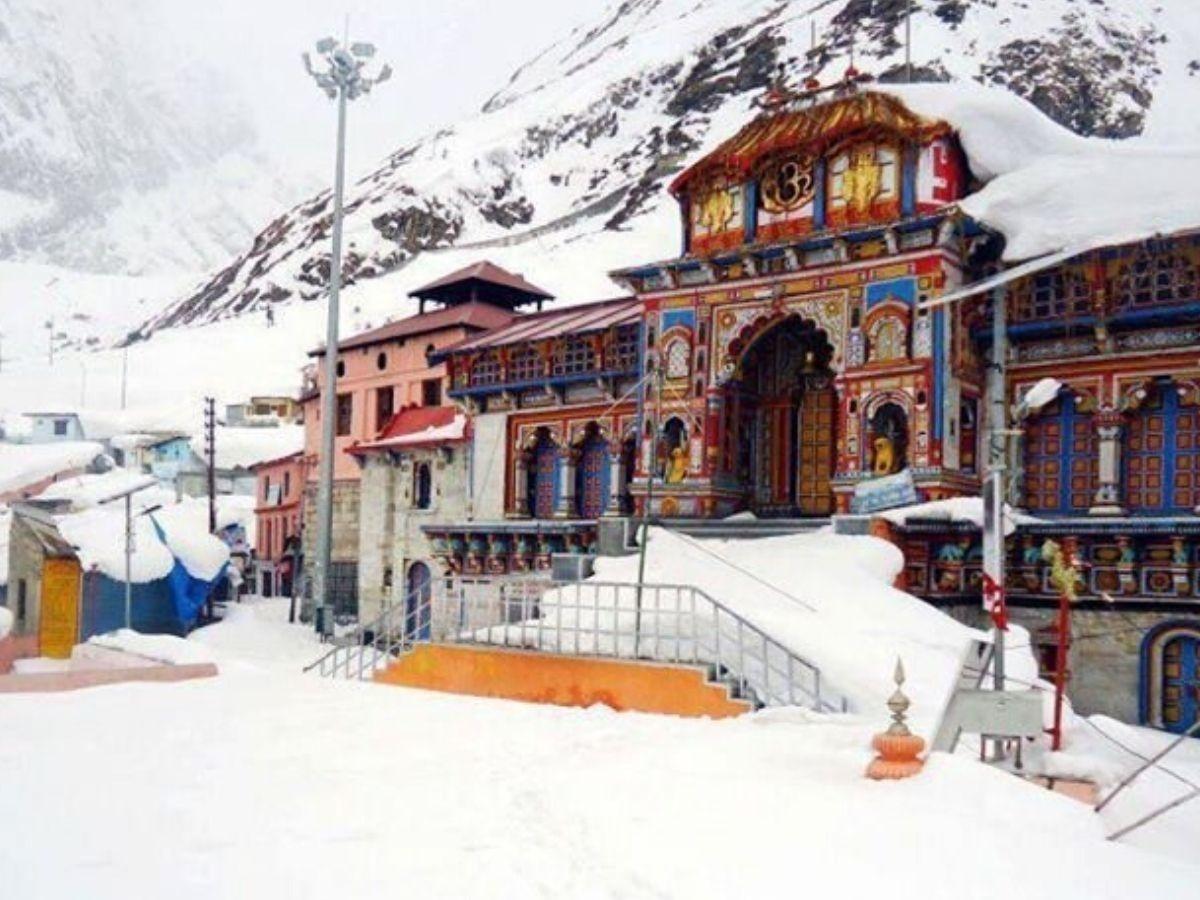
Badrinath is a land of endless sagas and gods, each adding only to the glory of this place. The snowy mountain peaks, effortlessly flowing Alaknanda River and beautiful landscapes provide a perfect atmosphere and establish a spiritual connection with god. Badrinath Dham is most visited among the Chota Char Dhams of the Garhwal Himalayas, including Yamunotri, Gangotri, and Kedarnath. Every year lakes of tourists come to this holy town to get glimpses of Shri Badrinath Ji (Lord Vishnu).
Top Sights in Badrinath Dham
- Badrinath Temple
- Tapta Kund
- Sheshnetra
- Bramha Kapal
- Neellkantha
- Mara Murti Mandir
- Vasudhara Falls
- Charanpaduka
Badrinath Temple
Badrinath Temple or Badrinarayan Temple is the most appealing site of Badrinath Dham. This temple is standing at the height of 3,133 meters on in the Chamoli Garhwal region with its rich past along the banks of Alaknanda River. It is regarded as the most important temple of Vishnu and is said that it is established by Adi Shankaracharya.
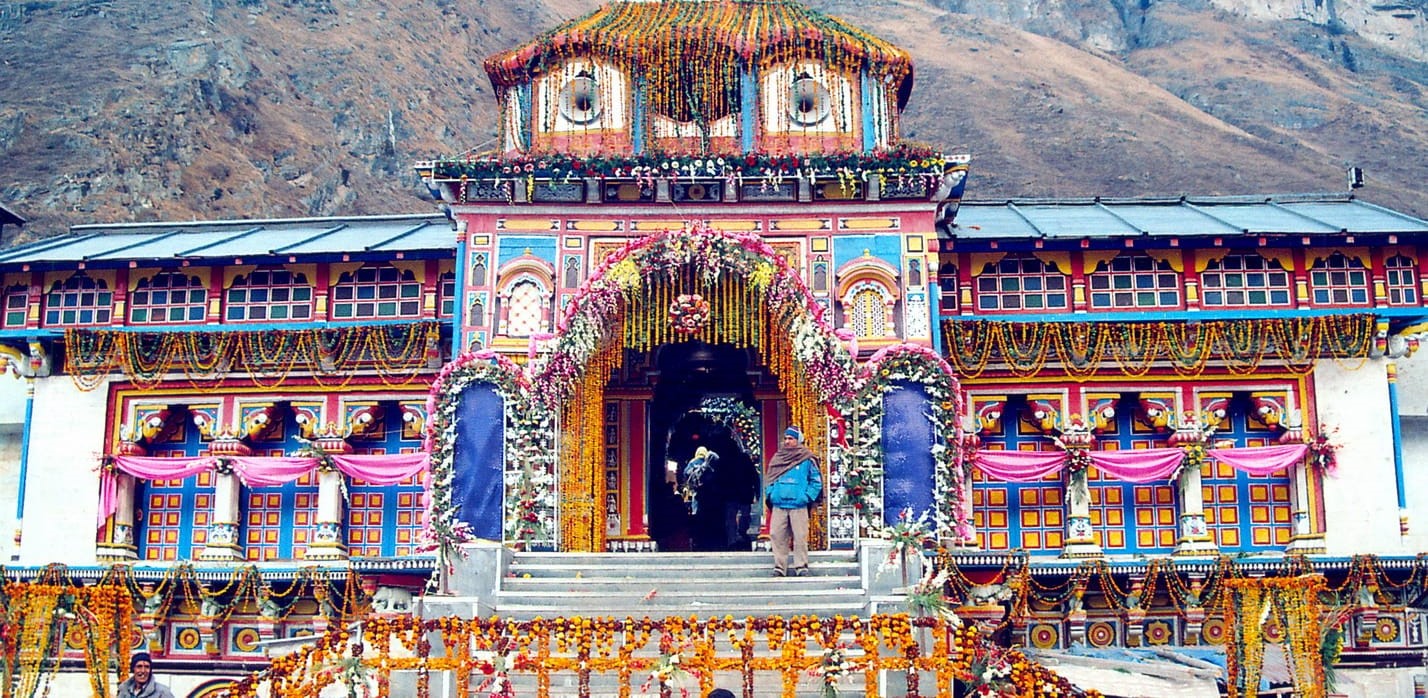
He found the Saligram idol of Lord Badri immersed in the waters of Alaknanda and installed it in a cave near the Tapta Kund. It is believed that Lord Vishnu came here to meditate. The temple is said to be of Vedic origin and has undergone several renovations over the centuries.
Story of Badrinath Temple
There are many popular and ancient stories revolving around the Badrinath Temple, let’s unfold them-
◊ According to one mythological tale, Lord Vishnu came to ‘Badri Van’ for meditation when Naradmuni warned the Lord for being greatly involved in human life and activities. He was unaware of the severe weather conditions of Himalayas during his mediation then to protect him, his wife, Goddess Lakshmi, took the form of a Badri tree and provided protection for a thousand years while he meditated. After seeing this, Lord Vishnu was gratified by her devotion towards him and hence he named the place after her as Badrikashram or Badrinath Dham. You can see the references of this temple in ancient religious texts like Vishnu Purana and Skanda Purana.
◊ According to another story, when the goddess Ganga carried her down to earth to help humanity, the earth could not endure the power of her fall. So she broke up into twelve networks, one of which was Alakananda. It later became Badrinath, the residence of Lord Vishnu. The Vedas also gave evidence to his religiousness.
Design Details of Badrinath Temple
The temple is dedicated to Lord Vishnu (Badrinath) and thus Lord Vishnu is depicted here in a meditative position. Lord Vishnu statue is surrounded by idols of other gods like Nar, Narayana, Narad, Ganesha, Garud and Kuber. The temple is built by Garhwal kings 2 centuries ago and thus this holy shrine displays the traditional Garhwali wooden architecture.
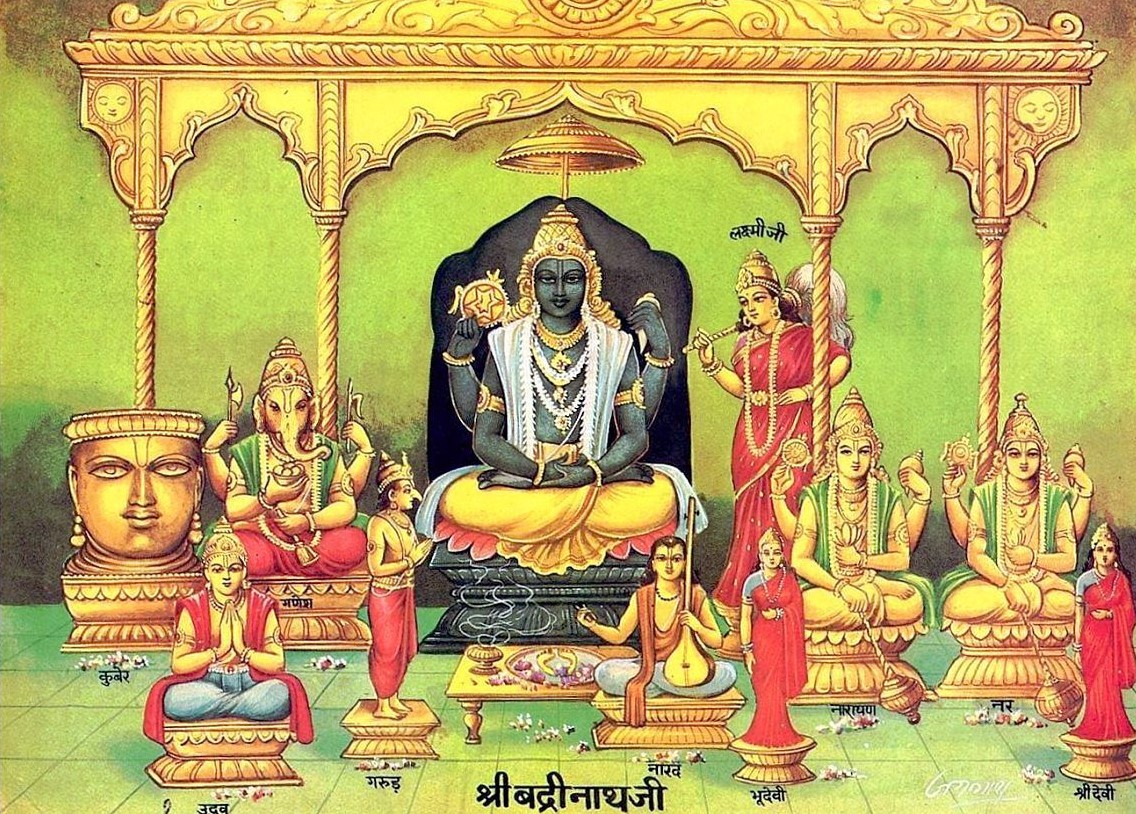
There are 15 statues of various god are present within the temple complex and each is constructed with black stone. A fascinating aspect is its magnificent architecture, with its stone façade, arches and unique roofs.
Tapt Kund, Badrinath Dham
Just below the temple, there is a natural hot water spring with approx 45ºC temperature and which is believed to have remedial properties. Before visiting the sacred shrine of Badrinath, a dip in this holy and hot waters of the Kund is necessary for all devotees.
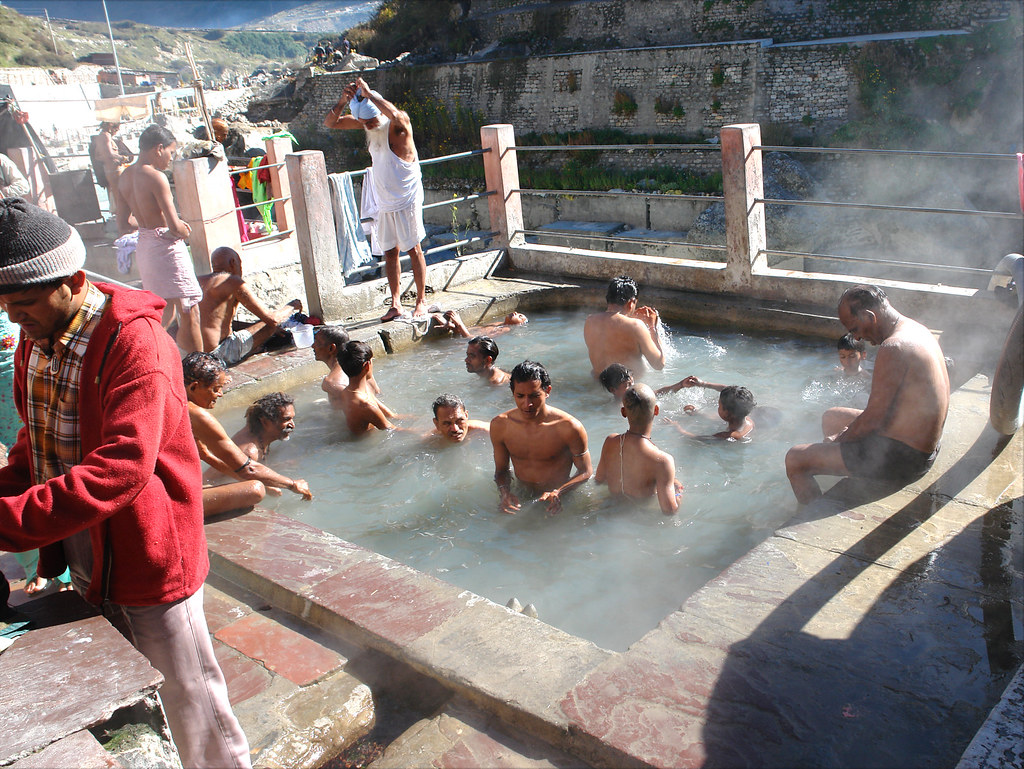
Near the Tapt Kund also lie five rocks according to mythology they are as per Narsingh, Varah Narad, Garur and Markanday. It lies between Badrinath shrine and Alaknanda River.
Sheshnetra
Shreshnetra has situated around 1.5 km from the temple complex between two seasonal lakes. On the opposite bank of Alaknanda, there exists a big rock which gives the mark of Shesh Nag, the legendary snake of Lord Vishnu.
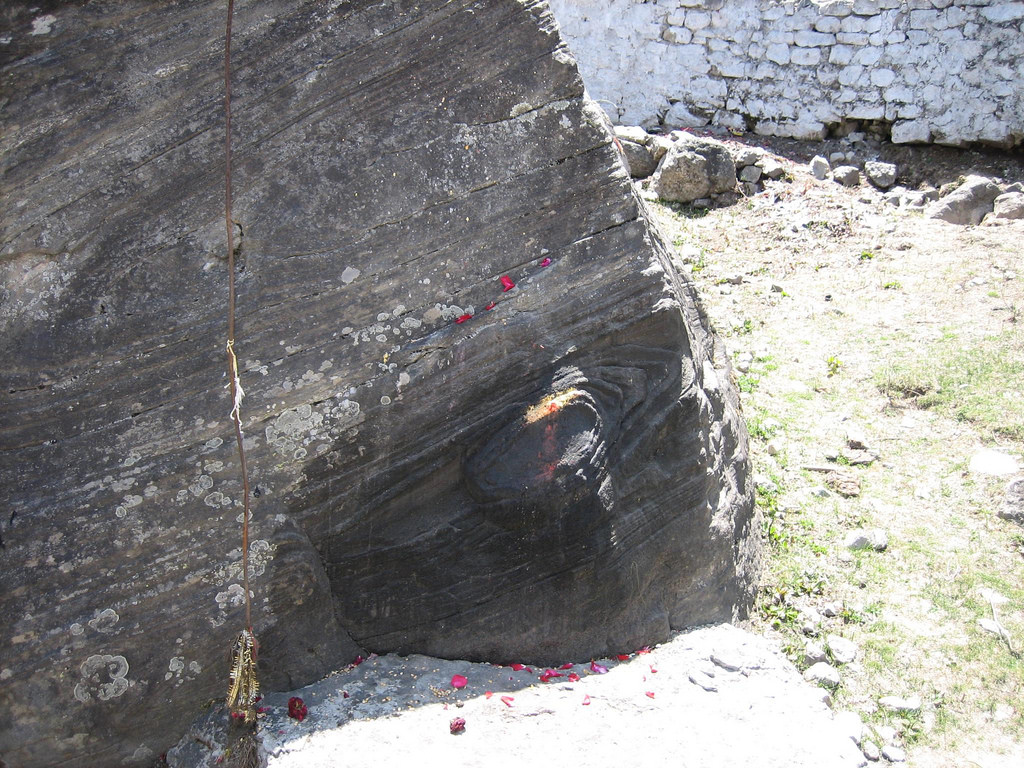
It is believed that serpent is shielding the sacred shrine of Badrinath. The Sheshnetra has a natural mark which looks like an eye of the Shesh Nag.
Brahma Kapal
Badrinath is located around 100 m from Badrinath temple on the banks of the Alakananda River. It is said that Lord Brahma resided here. Hindu devotees homage and perform rituals for the departed souls, on the banks of the river at this site.
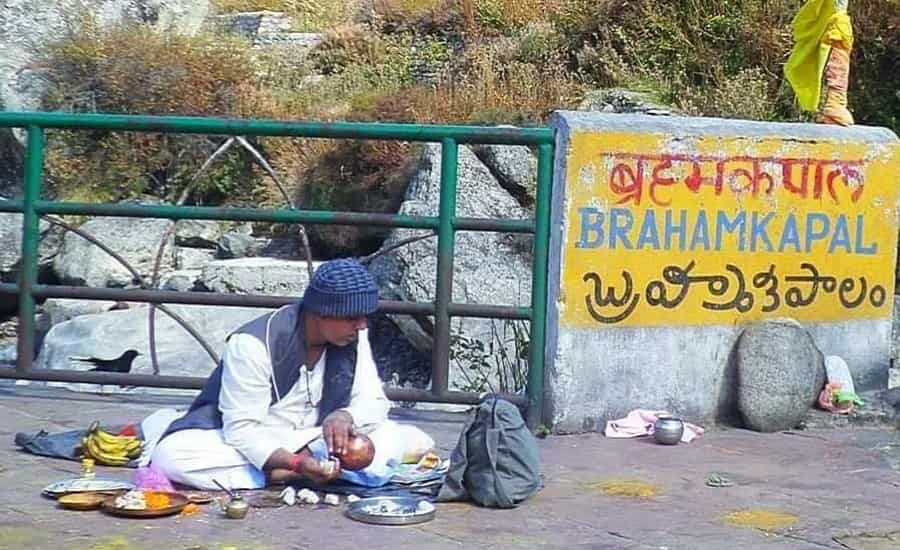
It is believed that by performing rites for the dead family members here on the ghats would free them from the vicious circle of life and death.
Nilkanth Peak
Nilkanth Peak is known as the ‘Queen of Garhwal’ and it is standing with its gigantic height of approximately 6,597m. It creates a great backdrop to the Badrinath shrine. Named after Lord Shiva, the splendour of the snow-covered peak gets increased as it receives the first rays of the Sun at dawn.
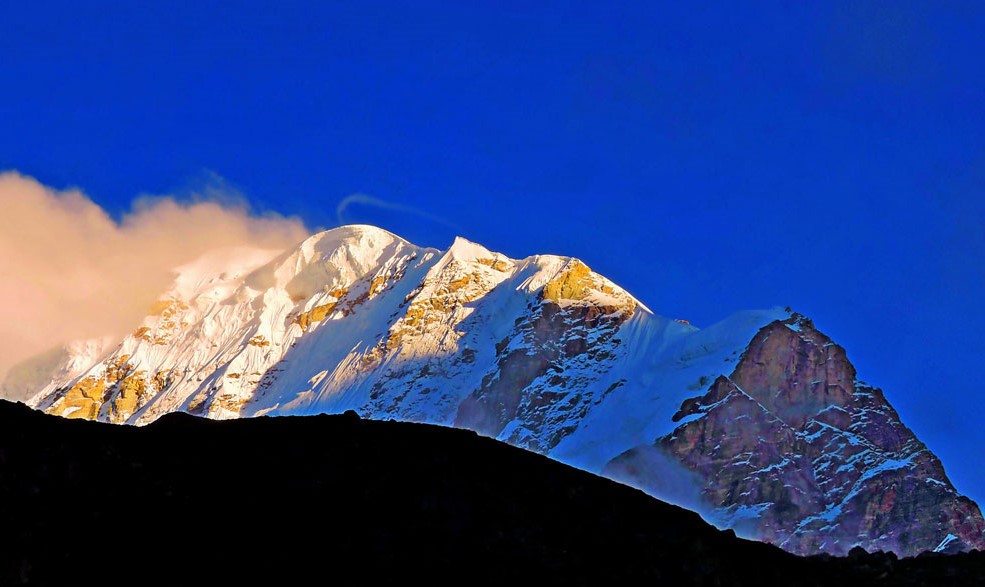
The peak of Nilkanth stands strong spreading its mighty aura for all pilgrims and travellers alike.
Mata Murti Mandir
It is located 3 km from the Badrinath temple, on the banks of Alaknanda River. Mata Murti temple is believed to be the mother of Nara and Narayan, the twin-brother avatar of Lord Vishnu.
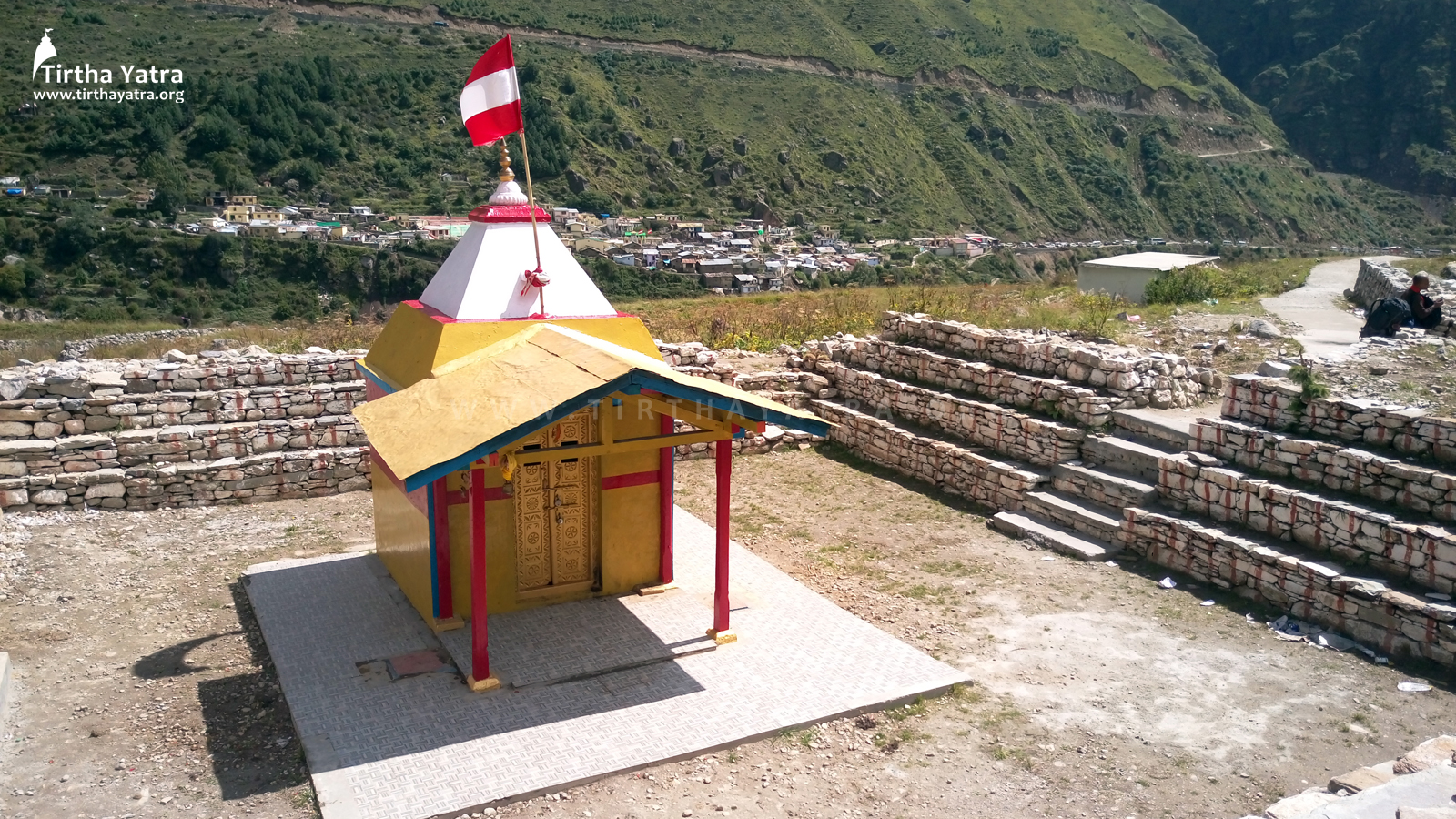
It was the constant prayers of Mata Murti that urged Lord Vishnu to take birth from her womb. Every year, in September, pilgrims gather to attend the Mata Murti fair.
Charanpaduka, Badrinath Dham
Stretched with boulders and caves, you can reach Charan Paduka, a steep climb that stretches about 3 km from the city of Badrinath. It is a rock that is believed to have been imprinted with the footprints of Lord Vishnu, as he descended from Vaikunth (his heavenly abode) on earth.
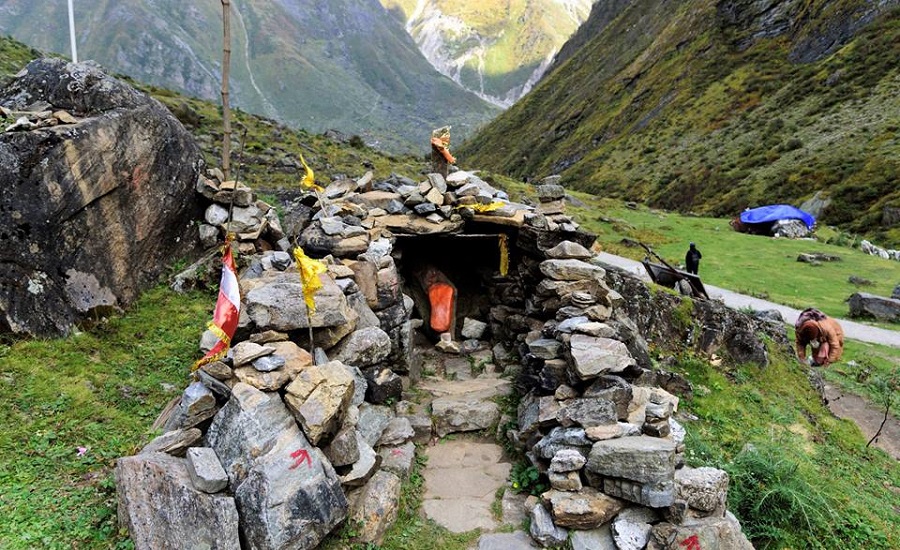
The present structure is the result of plenty of restorations the temple has undergone due to damages caused by avalanches and earthquakes. In the winter season, the idol of Lord Badri is shifted to Yogadhyan Badri in Pandukeshwar (Chamoli district).
Bottom Line –
The best time to visit Badrinath temple is during summers from May to June and then in September and October. It remains closed for six months every year due to extreme weather conditions in the Himalayan region. Badrinath Dham is easily accessible by bikes via roads or by trekking.
Also Read: Divine Tour of Kedarnath Dham: An Eternal Hindu Pilgrimage Site of India

